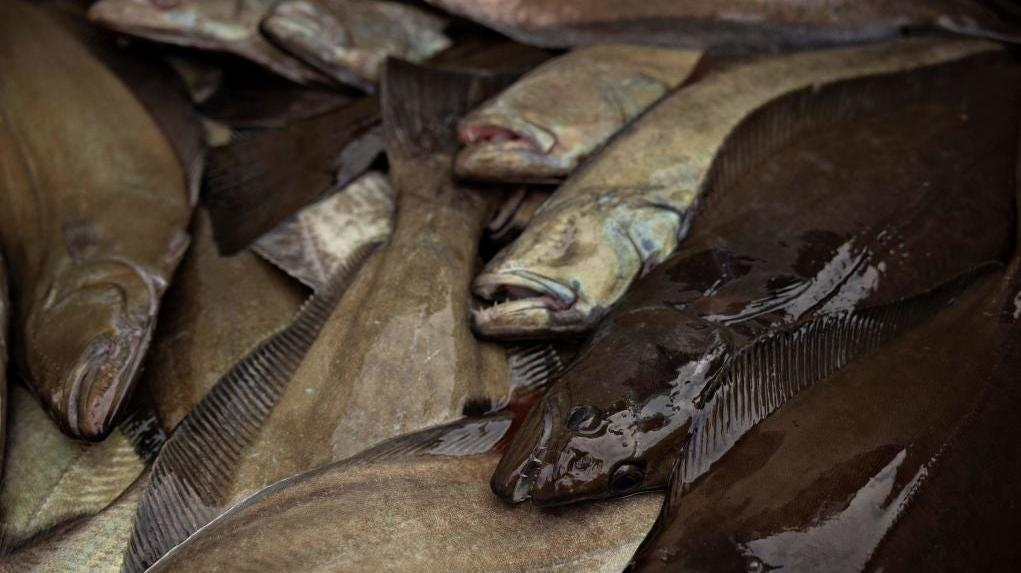Here's What That Big Climate Change Report Says About Food
The 2021 IPCC Report exposes global warming's potential effect on food systems, from aquaculture to food security.
Quick disclaimer: if you're just now waking up, you may want to come back to this article later. Sip your coffee, do some stretching. Meditate, maybe. Give yourself a few minutes before diving into this compendium of largely terrible news. If you've already settled into a comfortable state of despair on this Monday, then you're primed for what I'm about to tell you: the world's largest-ever climate change report was published today by the Intergovernmental Panel on Climate Change (IPCC), and it contains some dire implications for global food systems.
What is the IPCC report?
For context, the IPCC is a United Nations group of nearly 200 leading climate scientists. Prior to publishing the report, the group analyzed thousands of scientific papers in an attempt to predict the future of the planet if global warming continues at its current rate. Per the Associated Press, the report is the first major review of climate change science since 2013.
The report hinges on the fact that global warming is likely to reach 1.5°C above pre-industrial levels between 2030 and 2052 if it continues to increase at the current rate. In a far worse scenario, warming could reach as much as 2°C over pre-industrial levels. Either way, the prognosis isn't great.
As we know, our climate is inextricably linked to food production, impacting agriculture, food security, global trade—pretty much every aspect of food as we know it. In an attempt to get hard data on the future of food, I pulled the following takeaways from the report's "Projected Climate Change, Potential Impacts and Associated Risks" section:
Climate change threatens global food security
Per the report, increasing global warming will have a severe impact on biodiversity and ecosystems, including species loss and extinction. The report suggests that, of 105,000 species studied, 6% of insects, 8% of plants, and 4% of vertebrates are projected to lose over half of their "climatically determined geographic range" once global warming hits that 1.5°C mark. At 2°C, that goes up to 18% of insects, 16% of plants, and 8% of vertebrates. Fewer species = dramatically reduced biodiversity = strained food systems.
The report also found that approximately 4% of the global terrestrial land area could undergo a "transformation of ecosystems from one type to another" at 1.5°C of global warming, compared with 13% at 2°C. That kind of rapid transformations leaves little time for farmers to successfully shift their agricultural practices.
Seafood as we know it will disappear
Short of a miracle, global aquaculture is a sinking ship. The IPCC found that global warming of 1.5°C is "projected to shift the ranges of many marine species to higher latitudes as well as increase the amount of damage to many ecosystems." This could reduce already tight coastal resources, annihilate the productivity of fisheries, drive problems with invasive species, and lead to greater frequency of disease within marine life.
Food inequality is about to get much worse
The IPCC writes that "climate-related risks to health, livelihoods, food security, water supply, human security, and economic growth are projected to increase with global warming of 1.5°C and increase further with 2°C." Those risks increase for "disadvantaged and vulnerable populations, some indigenous peoples, and local communities dependent on agricultural or coastal livelihoods." Per the report, we can expect Arctic ecosystems, dryland regions, small islands, and developing states in Africa and Asia to be hit the hardest.
Food shortages could become the new normal
If you're disturbed by the Great Chicken Wing Shortage of 2021, I've got bad news. The report found that global warming could adversely affect livestock "depending on the extent of changes in feed quality, spread of diseases, and water resource availability." That could, in turn, reduce the availability of certain animal products in the not-so-distant future. Staple crops like maize, rice, wheat, and potentially other cereal crops could also be adversely affected, particularly in Africa, Southeast Asia, and Central and South America.
Things are bleak—but we still have some options
It's impossible to deny: the report is dire. It does, however, propose a range of "adaptation options" to reduce the risks to food ecosystems. Those adaptation options include ecosystem restoration, large-scale biodiversity management, a focus on sustainable aquaculture, an increase in social safety nets, and a focus on sustainable land use and planning. Unfortunately, without a focused effort that forces major industry players to cooperate, the next 20 years are looking pretty brutal. If you'd like to join me in my pit of malaise, the complete report is available online.
